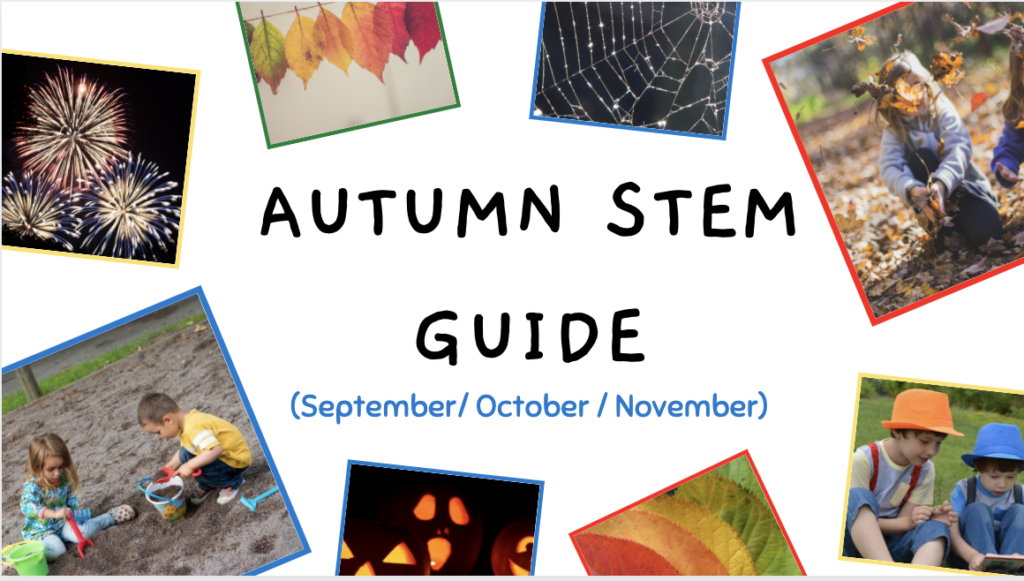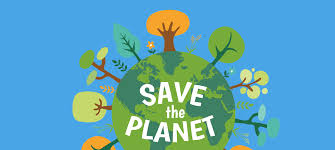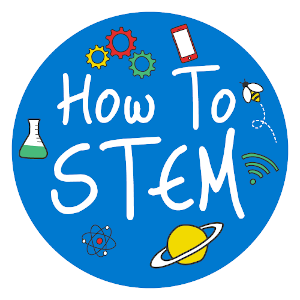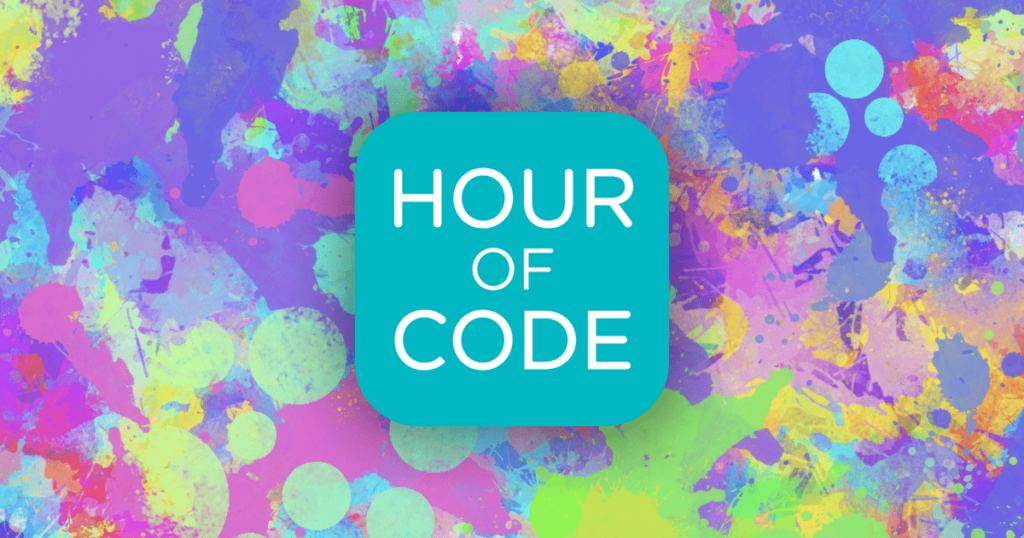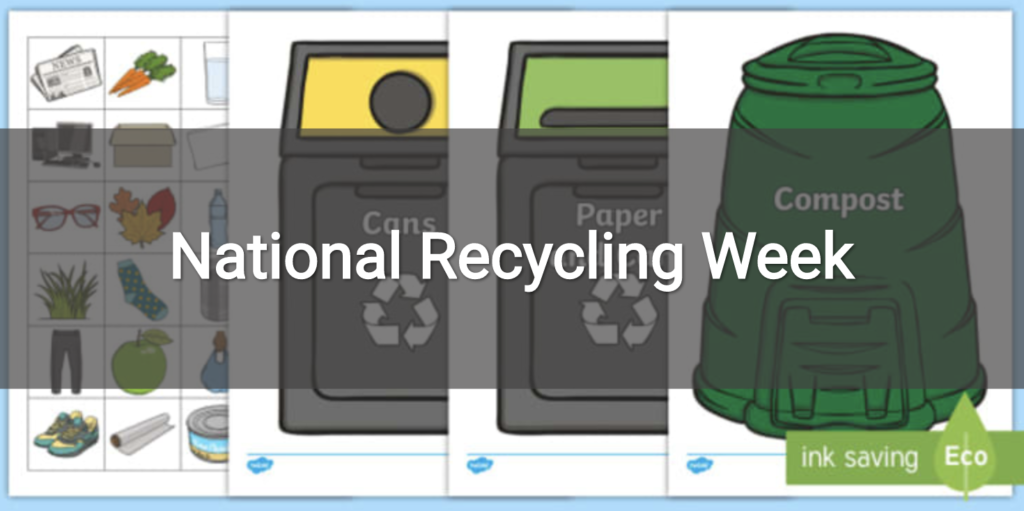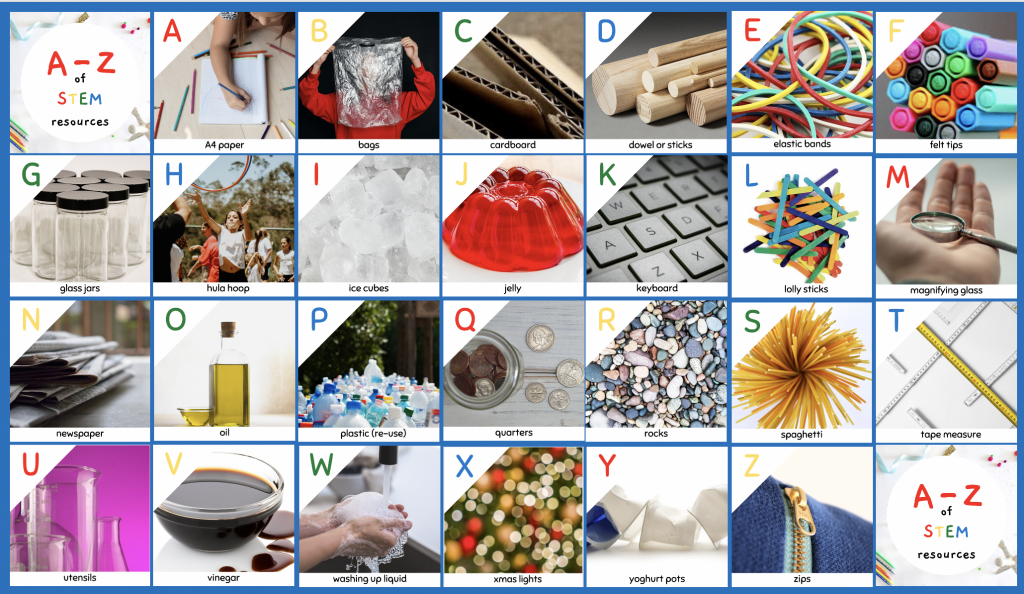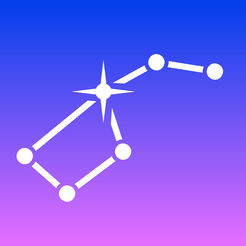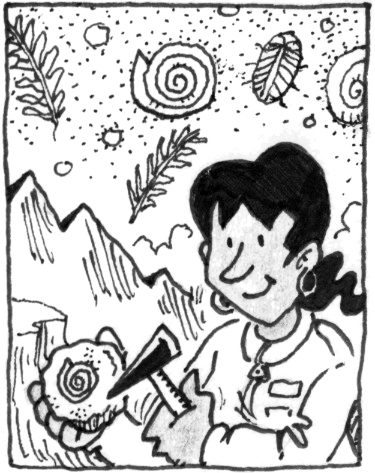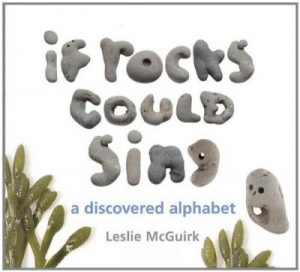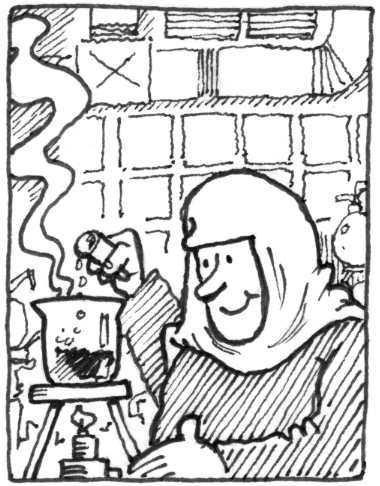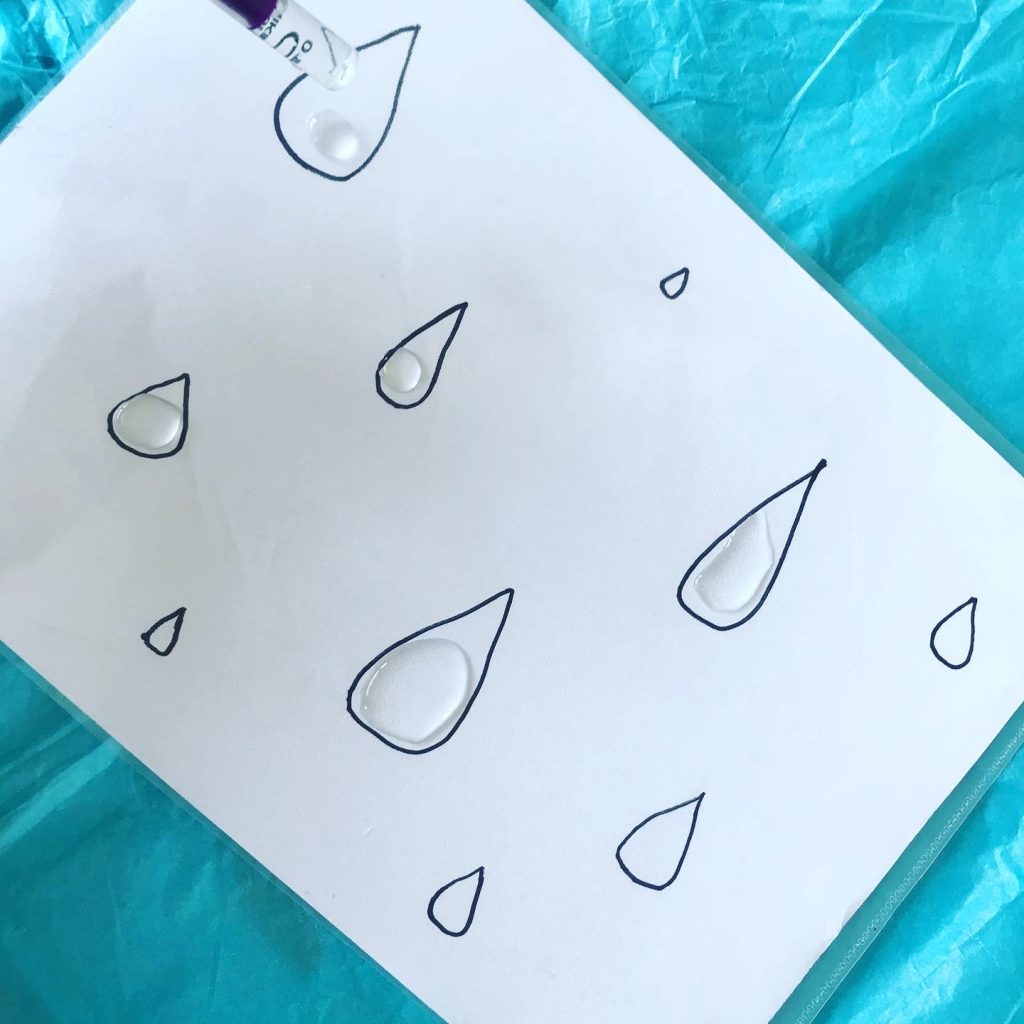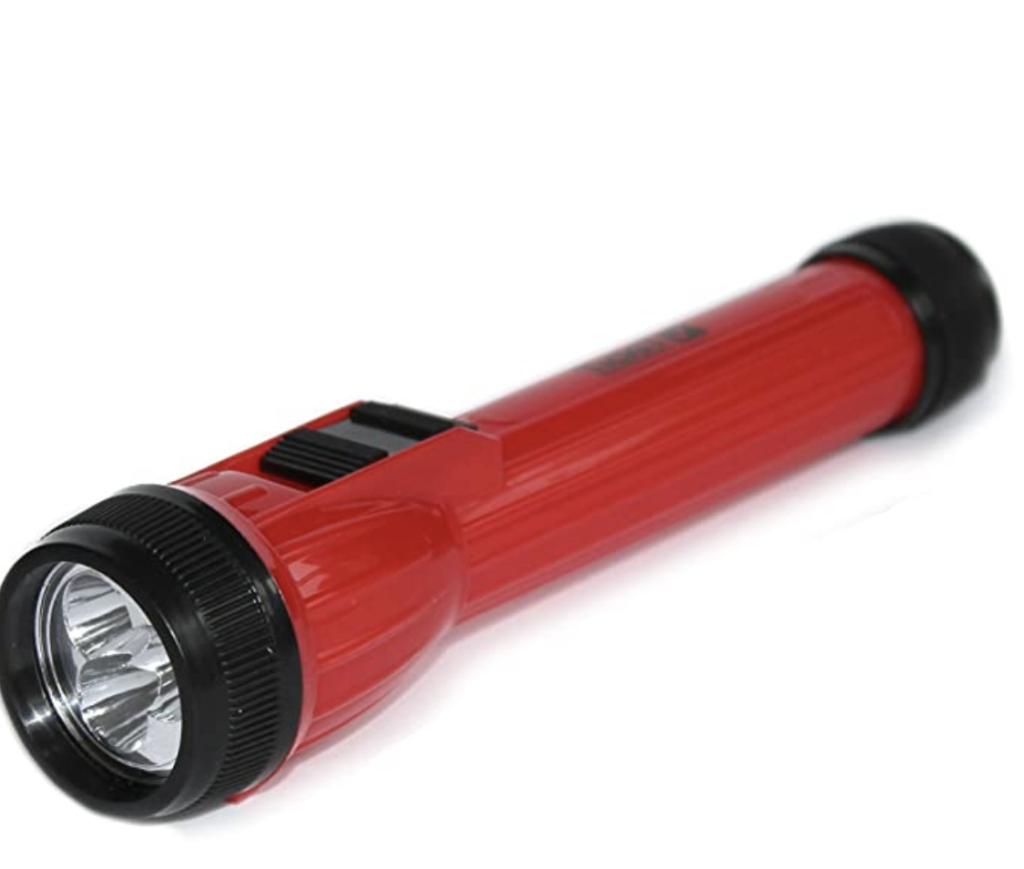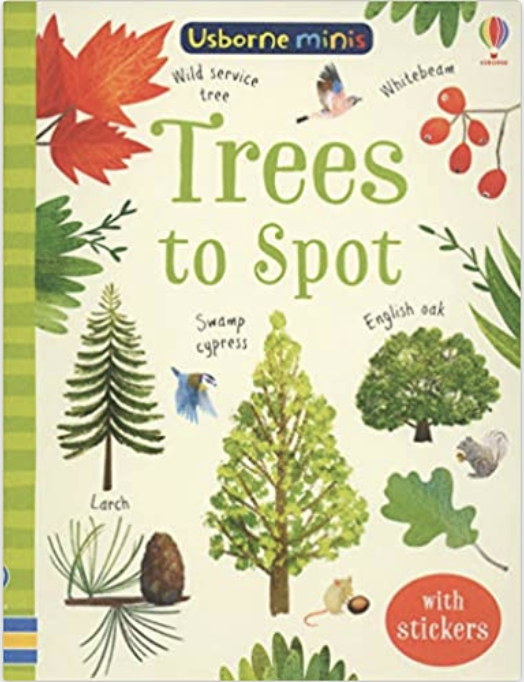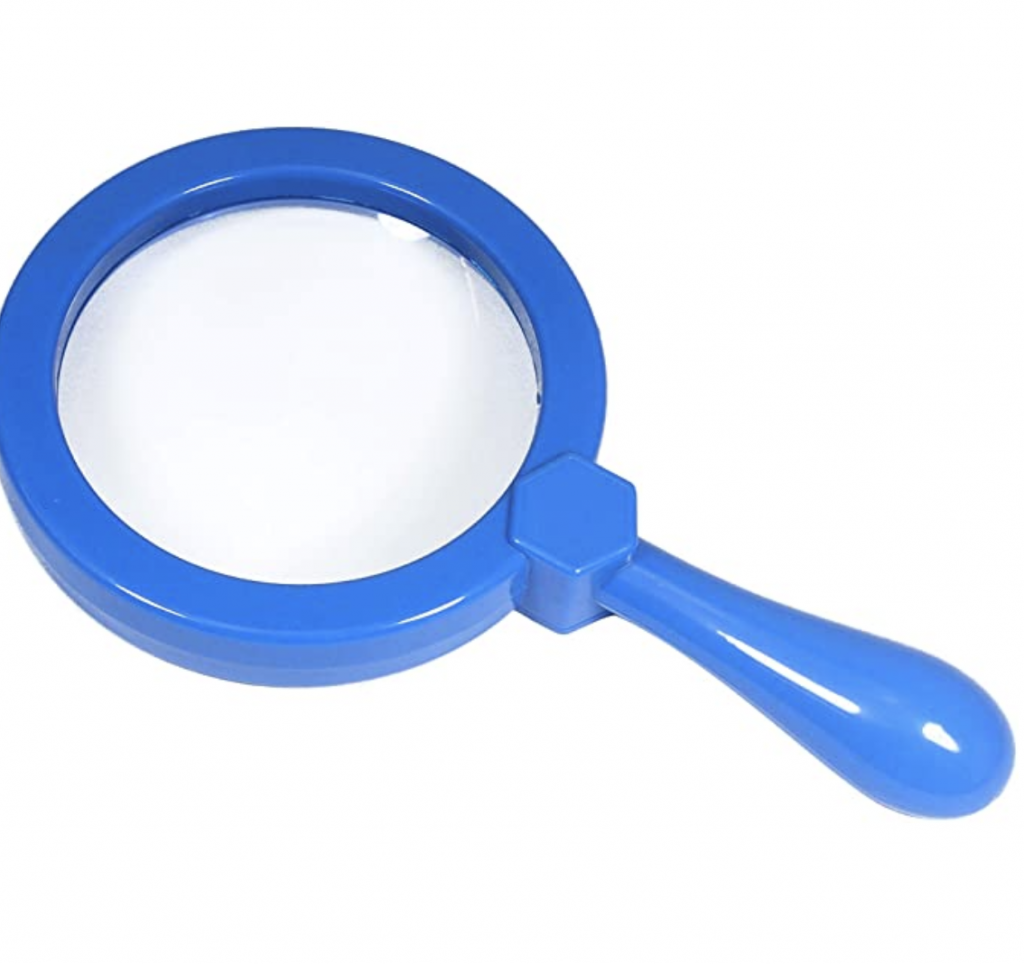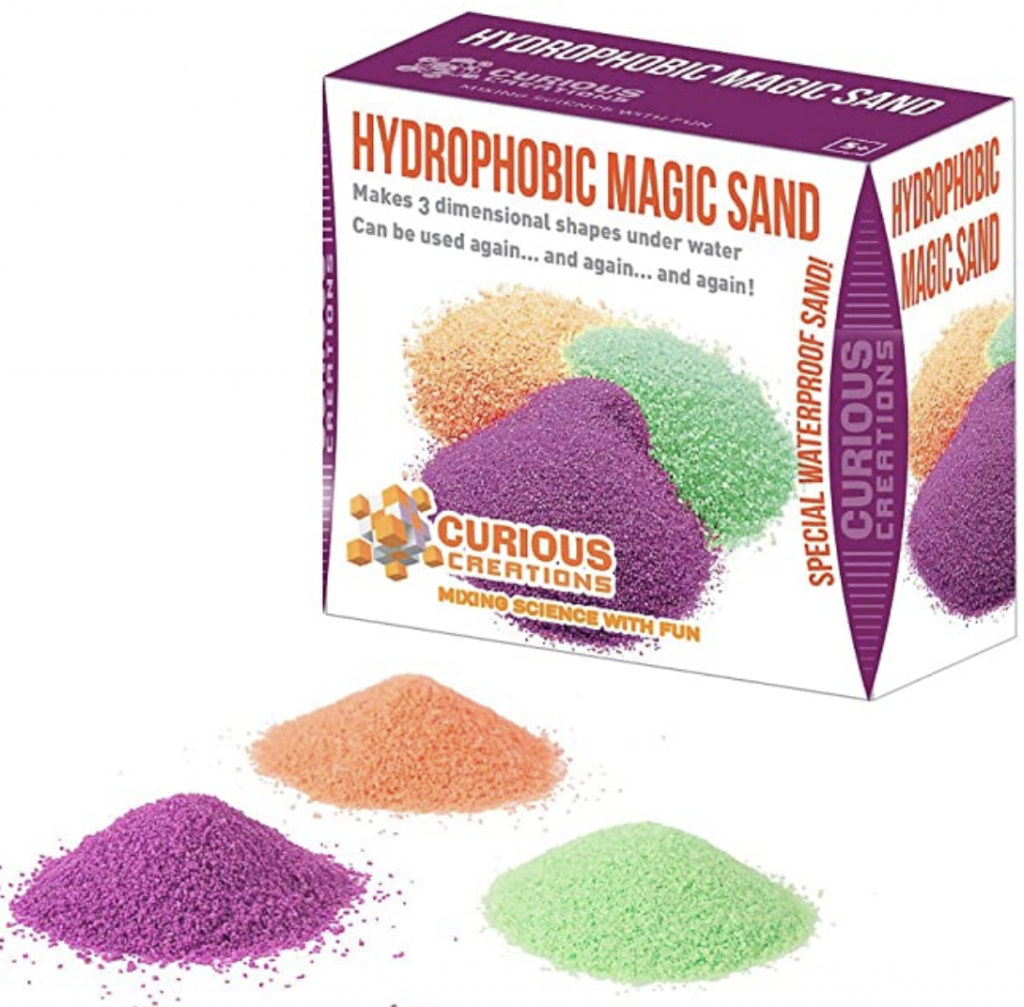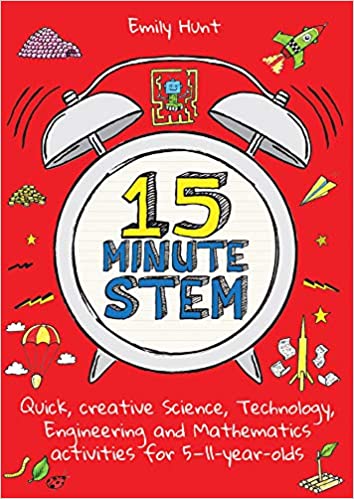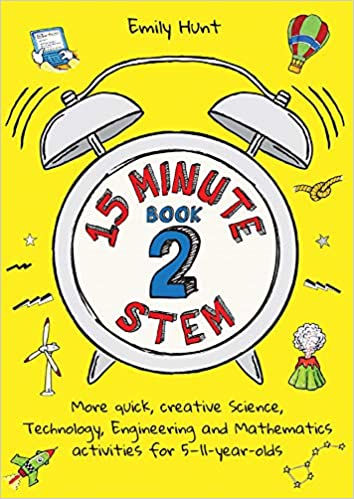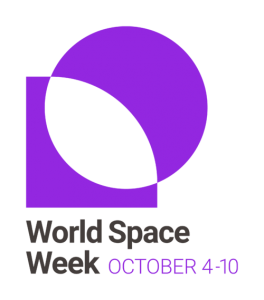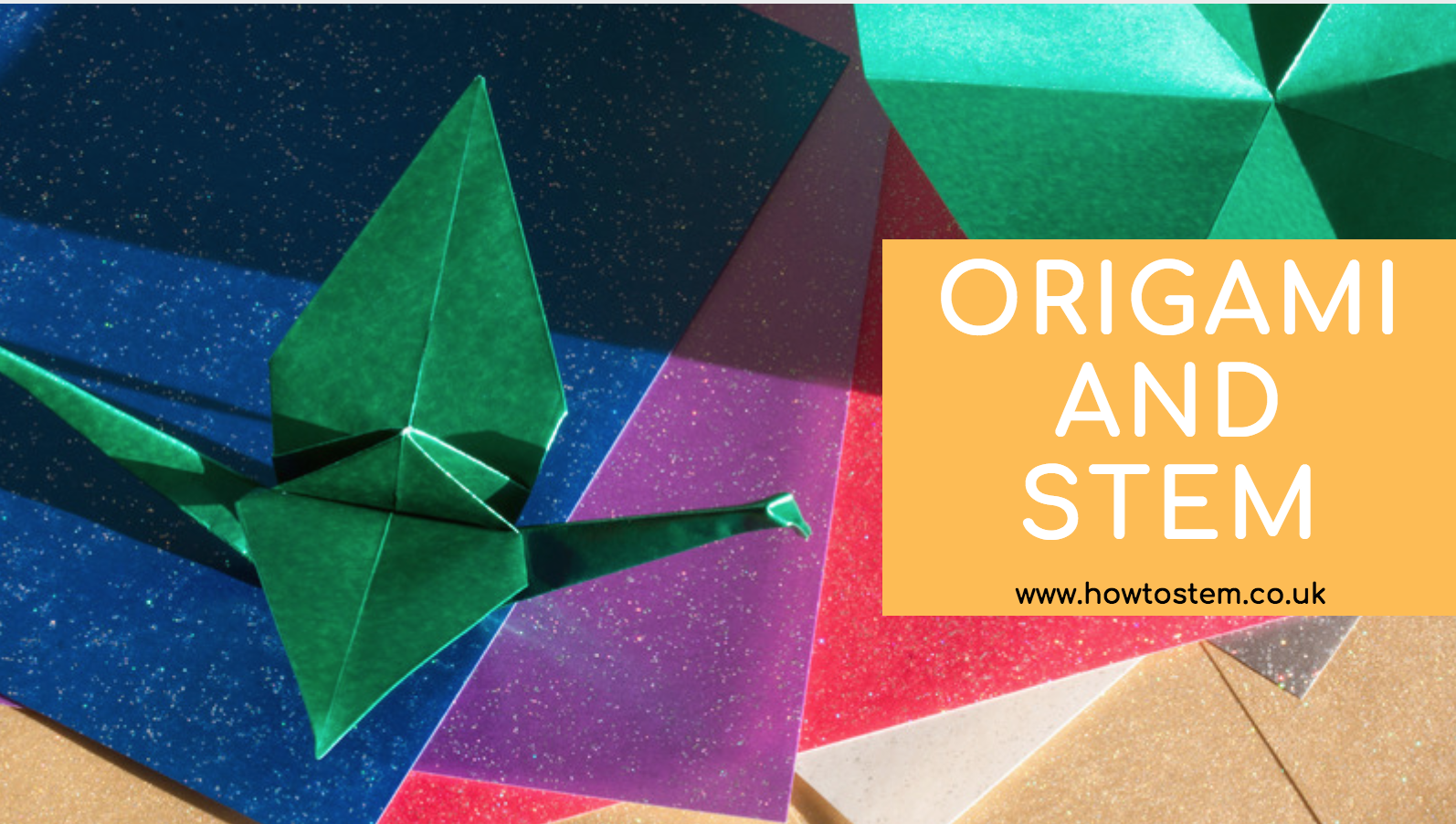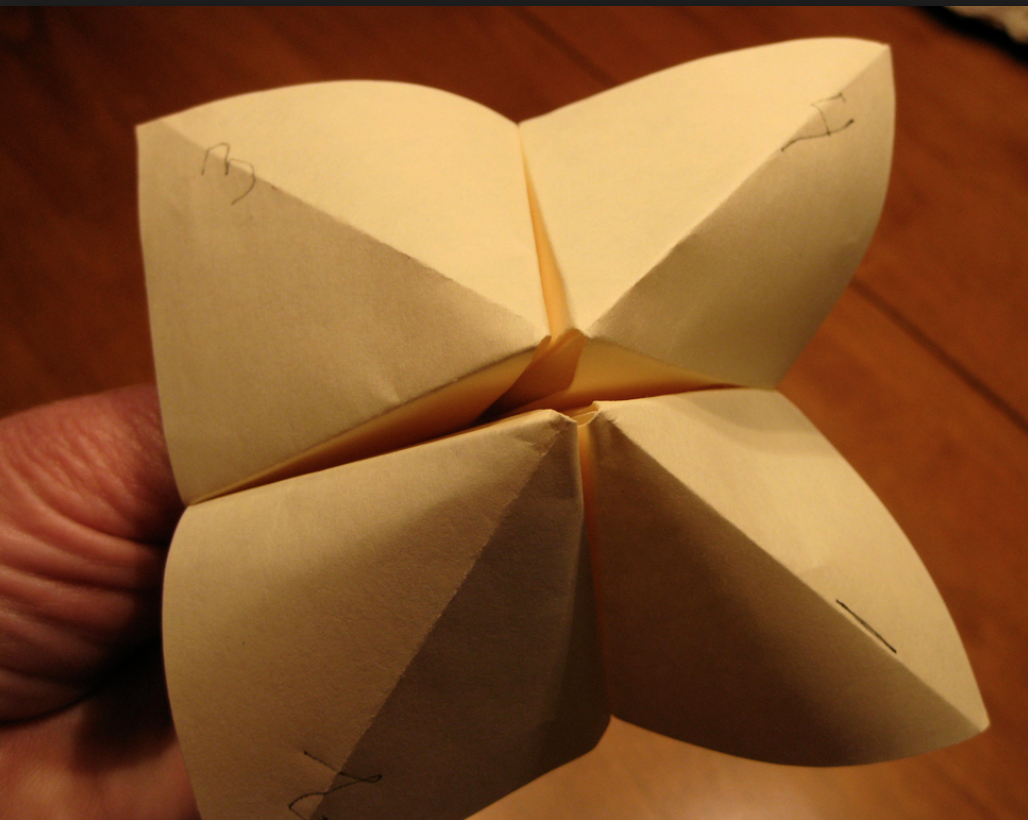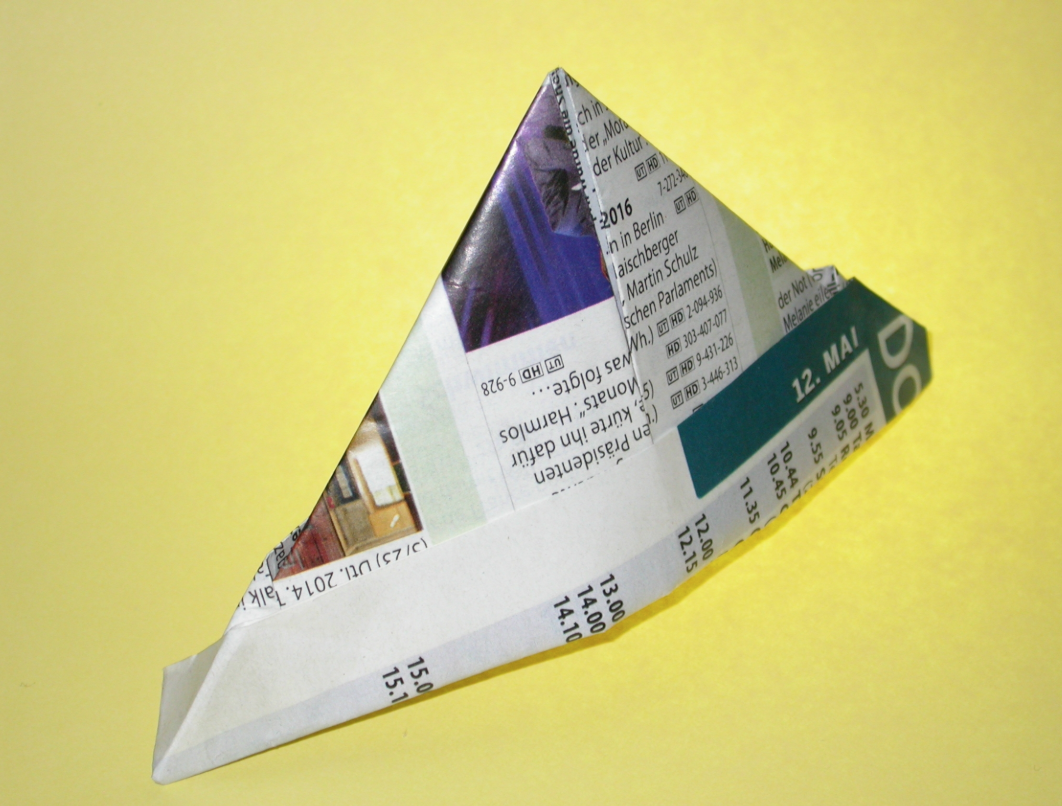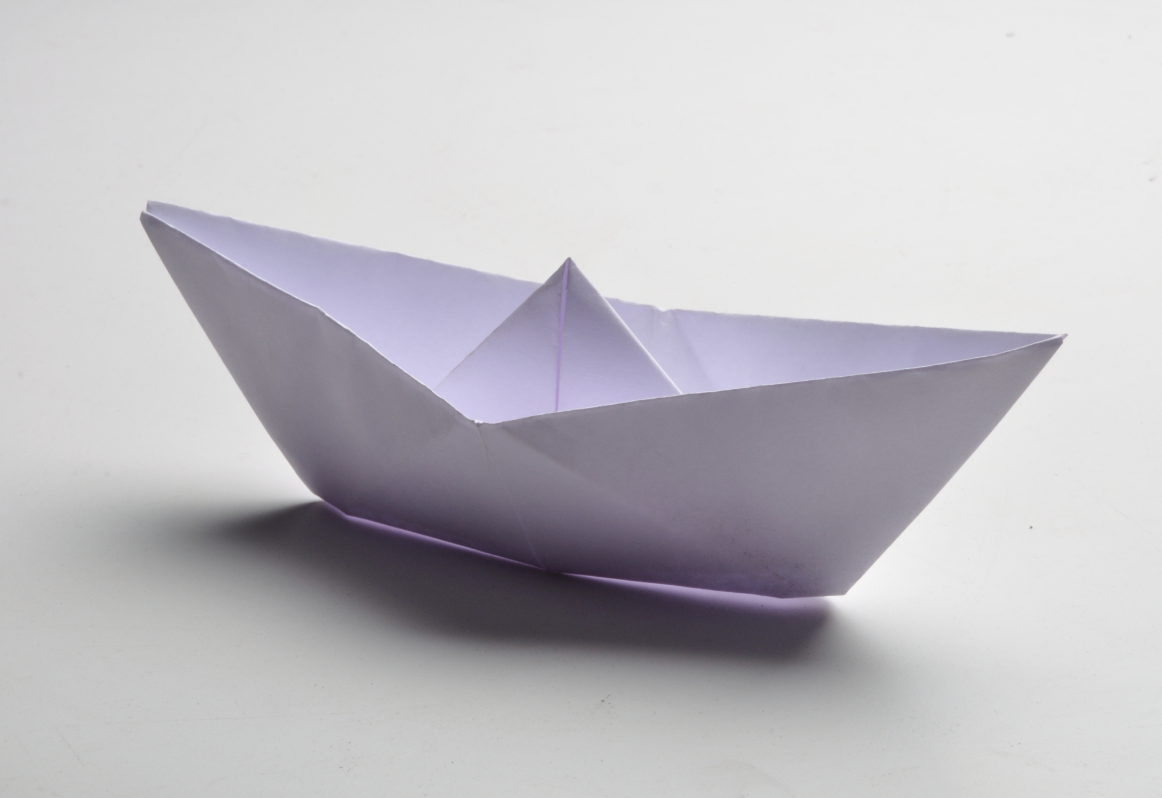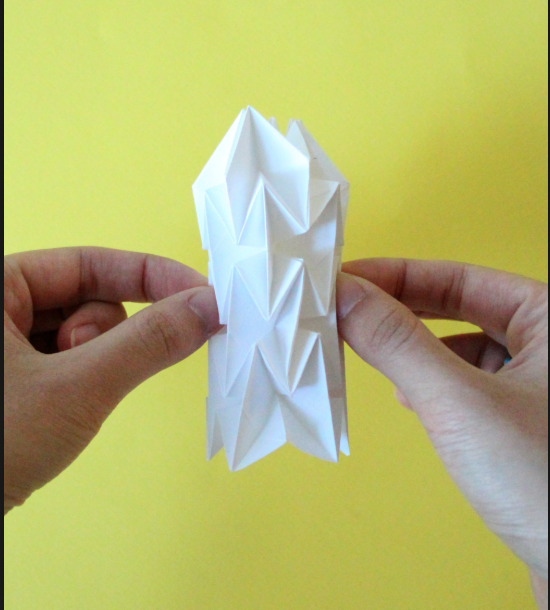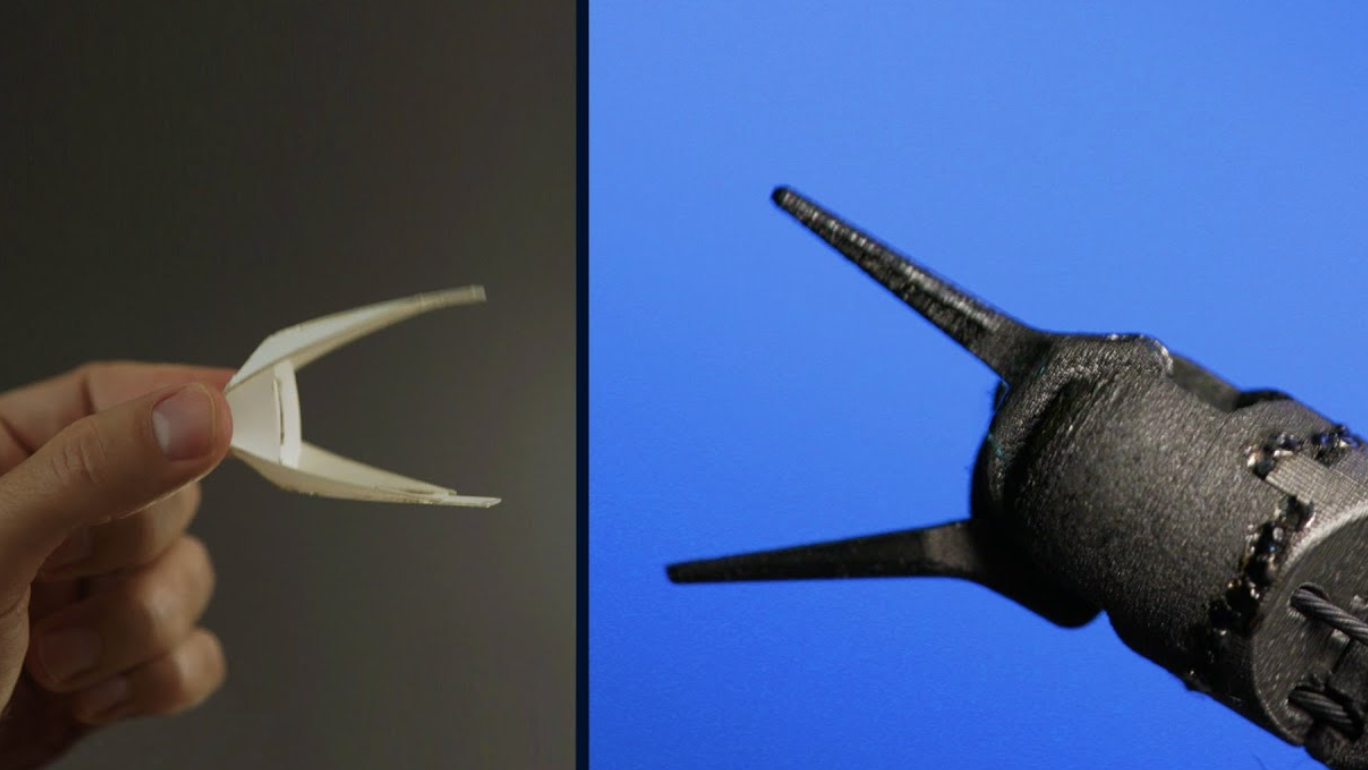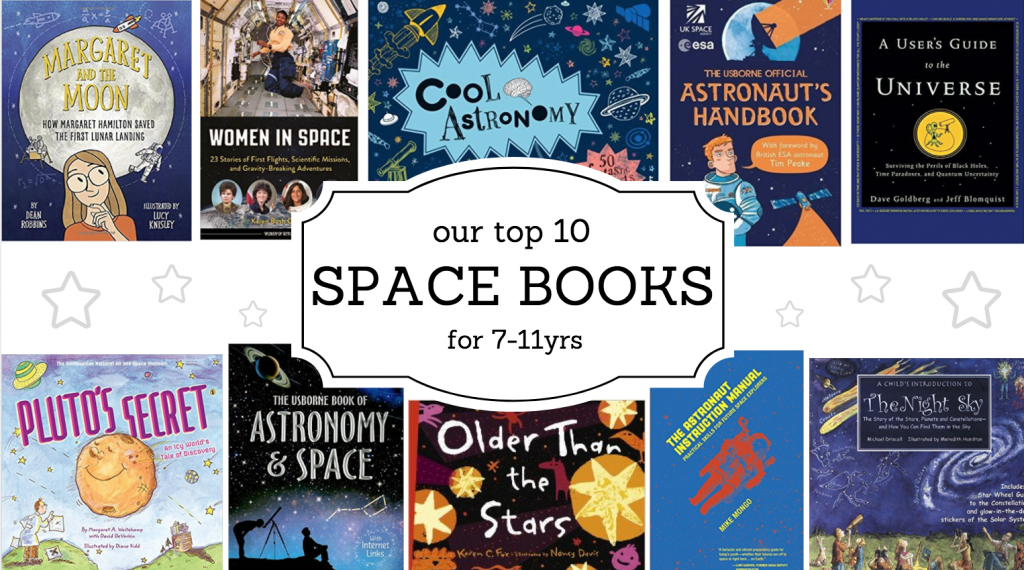
If you’re preparing to blast off into space, you’ll probably want to take a good book. The same can be said if you’re about to embark on a space topic. Luckily for you we’ve got plenty of books to recommend. The books in this list are suitable for 7-11yr olds. To see our recommendations for 4-7yr olds click here.
Ready… steady…. blast off!
10. The Astronauts Handbook
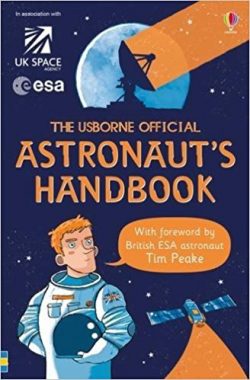
SUGGESTED AGE: 7+ years
DESCRIPTION FROM THE PUBLISHER: Discover how you become an astronaut, the training you must undertake, how you travel into space and what you do when you’re up there. With a foreword from ESA astronaut Tim Peake, the first British astronaut to embark on a mission to the International Space Station. Published in association with the UK Space Agency.
For Amazon.co.uk click here For Amazon.com click here
9. Older Than The Stars
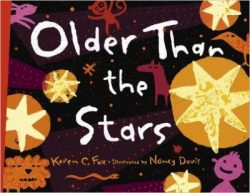
SUGGESTED AGE: 7+ years
DESCRIPTION FROM THE PUBLISHER: How old are you? Older than you think. In a way, we are all as old as the universe itself. In fact, every bit of every one of us was created in the Big Bang, billions of years ago. Stunning illustrations and lively verse tell the story of the cosmic connections that tie human beings to the beginning of the universe. Simple, informative prose provides additional facts.
For Amazon.co.uk click here For Amazon.com click here
8. Margaret and the Moon
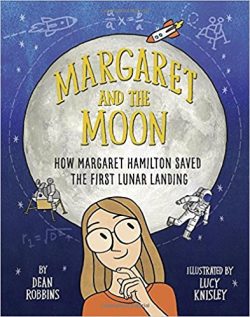
SUGGESTED AGE: 6-9 years
DESCRIPTION FROM THE PUBLISHER: Margaret Hamilton loved numbers as a young girl. She knew how many miles it was to the moon (and how many back). She loved studying algebra and geometry and calculus and using math to solve problems in the outside world. Soon math led her to MIT and then to helping NASA put a man on the moon! She handwrote code that would allow the spacecraft’s computer to solve any problems it might encounter. Apollo 8. Apollo 9. Apollo 10. Apollo 11. Without her code, none of those missions could have been completed.
For Amazon.co.uk click here For Amazon.com click here
7. Pluto’s Secret
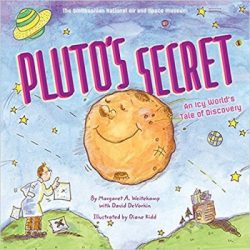
SUGGESTED AGE: 6-10 years
DESCRIPTION FROM THE PUBLISHER: People, children especially, have been baffled, bewildered, and even outraged by the fact that Pluto is no longer called a planet. Through whimsical artwork and an entertaining dialogue format, Pluto’s Secret explains the true story of this distant world. Providing a history of the small, icy world from its discovery and naming to its recent reclassification, this book presents a fascinating look at how scientists organise and classify our solar system as they gain new insights into how it works and what types of things exist within it. The book includes a glossary and bibliography.
For Amazon.co.uk click here For Amazon.com click here
6. Cool Astronomy
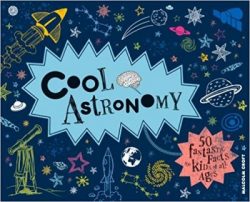
SUGGESTED AGE: 7+ years
DESCRIPTION FROM THE PUBLISHER: 50 fun, simple and entertaining ways to improve your understanding of astronomy for kids of all ages! Discover how telescopes are made, learn about invisible light and study the scale of the universe in a way you’ll never forget! The follow-up to the popular Cool Science and Cool Maths, also by Portico. Inside this mega-jam-packed book are fifty fact-tastic ways to advance and improve your astronomy skills so you’ll never feel alone in the universe again! Learn amazing space-related tricks such as how to watch a solar eclipse safely and mapping stars from your own back garden, right down to expertly simplifying the supermassive numbers and distances involved in the space between space so you’ll never forget them! With Cool Astronomy, you’ll discover everything you need to know about the universe, from Asteroids to Zubenelgenubi… and almost everything in between!
For Amazon.co.uk click here For Amazon.com click here
5. Women In Space
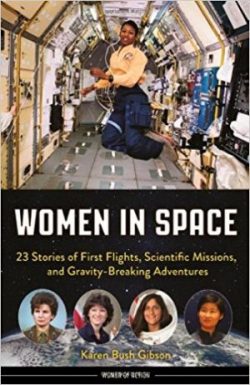
SUGGESTED AGE: 7+ years
DESCRIPTION FROM THE PUBLISHER: Women in Space profiles 23 pioneers, including Eileen Collins, the first woman to command the space shuttle; Peggy Whitson, who logged more than a year in orbit aboard the International Space Station; and Mae Jemison, the first African American woman in space; as well as astronauts from Japan, Canada, Italy, South Korea, France, and more. Readers will also learn about the Mercury 13, American women selected by NASA in the late 1950s to train for spaceflight. Though they matched and sometimes surpassed their male counterparts in performance, they were ultimately denied the opportunity to head out to the launching pad. Their story, and the stories of the pilots, physicists, and doctors who followed them, demonstrate the vital role women have played in the quest for scientific understanding.
IDEAS FOR USE: Read this book and then check out our profiles of some of the women featured, using them as a basis for further research.
For Amazon.co.uk click here For Amazon.com click here
4. A Users Guide to the Universe
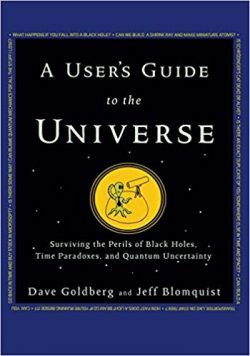
SUGGESTED AGE: 10+ years
DESCRIPTION FROM THE PUBLISHER: Answers to science’s most enduring questions from “Can I break the light-speed barrier like on Star Trek?” and “Is there life on other planets?” to “What is empty space made of?” This is an indispensable guide to physics that offers readers an overview of the most popular physics topics written in an accessible, irreverent, and engaging manner while still maintaining a tone of wry skepticism. Even the novice will be able to follow along, as the topics are addressed using plain English and (almost) no equations. Veterans of popular physics will also find their nagging questions addressed, like whether the universe can expand faster than light, and for that matter, what the universe is expanding into anyway. Gives a one-stop tour of all the big questions that capture the public imagination including string theory, quantum mechanics, parallel universes, and the beginning of time Explains serious science in an entertaining, conversational, and easy-to-understand way Includes dozens of delightfully groan-worthy cartoons that explain everything from special relativity to Dark Matter Filled with fascinating information and insights, this book will both deepen and transform your understanding of the universe.
For Amazon.co.uk click here For Amazon.com click here
3. The Night Sky
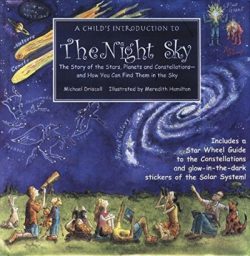
SUGGESTED AGE: 8+ years
DESCRIPTION FROM THE PUBLISHER: Children eight and up will enjoy this conversational but information-packed introduction to astronomy and stargazing, which includes the achievements of the great scientists, the history of space exploration, the story of our solar system, the myths behind the constellations, and how to navigate the night sky. Whimsical color illustrations on every page and handy definitions and sidebars help engage younger readers and develop their interest. The special star wheel helps locate stars and planets from any location at any time of year. This is the third in Black Dog & Leventhal’s successful series including The Story of the Orchestra and A Child’s Introduction to Poetry.
For Amazon.co.uk click here For Amazon.com click here
2. Astronomy & Space
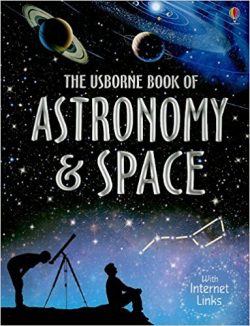
SUGGESTED AGE: 5-11yrs
DESCRIPTION FROM THE PUBLISHER: A comprehensive guide to the solar system accompanied by mesmerising photography and intricate illustrations. Children can learn about star groups, explore space and follow the Usborne Quicklinks to find out more. A great book to dip in and out of, for homework and for pleasure.
For Amazon.co.uk click here For Amazon.com click here
1. The Astronaut Instruction Manual

SUGGESTED AGE: 7+ years
DESCRIPTION FROM THE PUBLISHER: Endorsed by authors, teachers, and congressman alike, Mike Mongo’s Astronaut Instruction Manual excites a new generation of space explorers. The book, designed for children between the ages of 6 and 13, is a functioning, interactive instruction manual. Using mad-lib-style fill-in-the-blanks, Mongo encourages his readers to articulate and illustrate their own vision of next-generation space travel. The Astronaut Instruction Manual captures a new era of enthusiasm for space exploration, driven in part by new space celebrities (Commander Chris Hadfield, Elon Musk), and in part by a shift in popular interest in space (SpaceX rockets, The Mars Colonial Transporter, Kerbal).”
IDEAS FOR USE: Read this book and then link it to our profiles of inspiring astronauts, using them as a basis for further research.
For Amazon.co.uk click here For Amazon.com click here
See our space books & apps page for other great books for this age range such as ‘Phoenix’ , ‘George’s Secret Key to the Universe‘, ‘The War of the Worlds‘ and ‘Cosmic‘.
